16 Complete Protein Pairings with Pickles
Summary:
- Pickle is low in protein - about 0.7 grams per large.
- In addition, pickle provides only 7 of the 9 essential amino acids sufficiently - it is a little low on leucine and methionine.[1]
- Pickle pairs well with brazil nut, carrots, hedge mustard seeds, yellow corn or pili nut to create a complete protein profile. [2] More pickle pairings and detailed analysis below.
A complete protein is a protein source that "contains adequate proportions of the nine essential amino acids" that our body can not produce on its own.
We analyzed the amino acid composition of pickles, and found both vegan and vegetarian pairings with pickles that creates a complete protein profile. Read on to discover new combinations of foods to enjoy!
Details on how we calculate complete protein profiles.
Amount of Protein in Pickles
Relatively low in protein, a single pickle contains 0.7 grams of protein, or about 1% of recommended daily values. [1]
To get the adequate amount of protein with pickles alone, you will need 74 pickles (10000 grams) for an average female, or 89 pickles for males. [4] That's over 1200 calories, and a lot of pickle! Pairing pickle with a richer protein source is a good idea.
Full nutritional profile for pickles
USDA Source: Pickles, cucumber, dill or kosher dill
Macronutrients in 1 large (135g) of pickles:
| % of RDV | Amount | ||
| Calories |
|
0.8% | 16 kCal |
| Carbohydrates |
|
0% | - |
| Total fat |
|
0.6% | 0.4 grams |
| Protein |
|
1.4% | 0.7 grams |
Essential Amino Acids in Pickles
Proportionally, pickle does contain abundant amounts of 7 out of the nine essential amino acids. However, pickle is a little short on leucine and methionine.[1]
To have adequate amounts of all nine essential amino acids with pickle alone, you will have to eat 127 pickles (17200 grams) for an average person. [2]
That's about 72% more pickle to compensate for the lack of leucine and methionine, compared to the protein requirement alone.
The amount of each essential amino acid in 1 large (135g) of pickles:
| Amino Acid | % of RDV [2] | Amount [1] |
Complete / Adequate |
|
| Protein |
|
1.4% | 0.675g | |
| Histidine |
|
1.9% | 0.012g | |
| Isoleucine |
|
3% | 0.026g | |
| Leucine |
|
1.9% | 0.035g | |
| Lysine |
|
2.1% | 0.035g | |
| Methionine |
|
0.8% | 0.007g | |
| Phenylalanine |
|
1.5% | 0.023g | |
| Threonine |
|
2.6% | 0.023g | |
| Tryptophan |
|
2.6% | 0.007g | |
| Valine |
|
2.5% | 0.027g |
More Complete Protein with Pickles
- Brazil Nut
- Carrots
- Hedge Mustard Seeds
- Yellow Corn
- Pili Nut
- Chia Seeds
- Nori
- Sesame Seeds
- Pumpkin Seeds
- Spirulina
- Poppy Seeds
- Cashews
Vegan 1. Brazil Nut and Pickles


A reasonable source of supplementary protein, brazil nut is high in leucine and methionine, which is complementary to pickle.
A ratio of 10 pickles (1350g) and 1.7 tablespoons of brazil nut (14g) creates a complete protein profile. The entire range to create a complete protein are ratios of 1:0.01 to 1:0 for pickle to brazil nut by weight.
Full nutritional profile for brazil nut
USDA Source: Nuts, brazilnuts, dried, unblanched
| Amino Acid | % of RDV [2] | Amount [5] |
Complete / Adequate |
|
| Protein |
|
17.5% | 8.7g | |
| Histidine |
|
28.3% | 0.18g | |
| Isoleucine |
|
38.2% | 0.33g | |
| Leucine |
|
27.3% | 0.52g | |
| Lysine |
|
24.5% | 0.42g | |
| Methionine |
|
25.9% | 0.22g | |
| Phenylalanine |
|
21.3% | 0.32g | |
| Threonine |
|
31.1% | 0.28g | |
| Tryptophan |
|
33.1% | 0.09g | |
| Valine |
|
34.7% | 0.38g |
Vegan 2. Carrots and Pickles


Carrot is low in protein, and is high in leucine and methionine, complementing the profile of pickle.
For example, 2.5 pickles (338g) and 2.8 carrots (200g) make a complete amino acids profile. In fact, any ratio of more than 0.6:1 of carrot to pickle will be complete.
Full nutritional profile for carrots
USDA Source: Carrots, raw
| Amino Acid | % of RDV [2] | Amount [6] |
Complete / Adequate |
|
| Protein |
|
7.1% | 3.5g | |
| Histidine |
|
17.5% | 0.11g | |
| Isoleucine |
|
25.4% | 0.22g | |
| Leucine |
|
15.4% | 0.29g | |
| Lysine |
|
16.9% | 0.29g | |
| Methionine |
|
6.6% | 0.06g | |
| Phenylalanine |
|
12% | 0.18g | |
| Threonine |
|
48.8% | 0.44g | |
| Tryptophan |
|
15.7% | 0.04g | |
| Valine |
|
19% | 0.21g |
Vegan 3. Hedge Mustard Seeds and Pickles


A reasonable source of supplementary protein, hedge mustard seed is high in leucine and methionine, which is complementary to pickle.
A ratio of 5 pickles (675g) and 3.8 tablespoons of hedge mustard seeds (18g) creates a complete protein profile. The entire range to create a complete protein are ratios of 1:0.03 to 1:5 for pickle to hedge mustard seed by weight.
Full nutritional profile for hedge mustard seeds
USDA Source: Seeds, sisymbrium sp. seeds, whole, dried
| Amino Acid | % of RDV [2] | Amount [7] |
Complete / Adequate |
|
| Protein |
|
11% | 5.5g | |
| Histidine |
|
18.7% | 0.12g | |
| Isoleucine |
|
28.2% | 0.24g | |
| Leucine |
|
20.7% | 0.39g | |
| Lysine |
|
18.5% | 0.32g | |
| Methionine |
|
10.3% | 0.09g | |
| Phenylalanine |
|
14.6% | 0.22g | |
| Threonine |
|
26.2% | 0.24g | |
| Tryptophan |
|
30.9% | 0.08g | |
| Valine |
|
24% | 0.26g |
Vegan 4. Yellow Corn and Pickles


Yellow corn is a reasonable source of supplementary protein, and is high in leucine and methionine, complementing the profile of pickle.
For example, 5 pickles (675g) and 1.6 ears of yellow corn (143g) make a complete amino acids profile. The entire range to create a complete protein are ratios of 1:0.21 to 1:0.02 for pickle to yellow corn by weight.
Full nutritional profile for yellow corn
USDA Source: Corn, sweet, yellow, cooked, boiled, drained, without salt
| Amino Acid | % of RDV [2] | Amount [8] |
Complete / Adequate |
|
| Protein |
|
16.5% | 8.2g | |
| Histidine |
|
30.3% | 0.19g | |
| Isoleucine |
|
37% | 0.32g | |
| Leucine |
|
36.3% | 0.69g | |
| Lysine |
|
22% | 0.38g | |
| Methionine |
|
15.4% | 0.13g | |
| Phenylalanine |
|
22.6% | 0.34g | |
| Threonine |
|
33.9% | 0.3g | |
| Tryptophan |
|
25.5% | 0.07g | |
| Valine |
|
37.8% | 0.41g |
Vegan 5. Pili Nut and Pickles
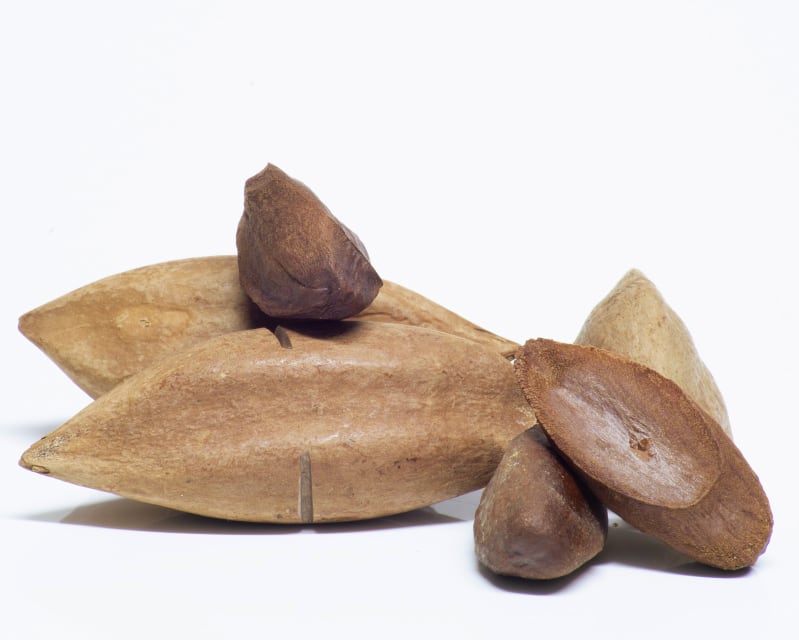

A reasonable source of supplementary protein, pili nut is high in leucine and methionine, which is complementary to pickle.
A ratio of 10 pickles (1350g) and 2.5 tablespoons of pili nut (19g) creates a complete protein profile. The entire range to create a complete protein are ratios of 1:0.01 to 1:0 for pickle to pili nut by weight.
Full nutritional profile for pili nut
USDA Source: Nuts, pilinuts, dried
| Amino Acid | % of RDV [2] | Amount [9] |
Complete / Adequate |
|
| Protein |
|
17.6% | 8.8g | |
| Histidine |
|
26.9% | 0.17g | |
| Isoleucine |
|
40.4% | 0.35g | |
| Leucine |
|
27.5% | 0.52g | |
| Lysine |
|
24.6% | 0.42g | |
| Methionine |
|
16.5% | 0.14g | |
| Phenylalanine |
|
21.7% | 0.32g | |
| Threonine |
|
34% | 0.31g | |
| Tryptophan |
|
39.7% | 0.1g | |
| Valine |
|
37.3% | 0.4g |
Vegan 6. Chia Seeds and Pickles
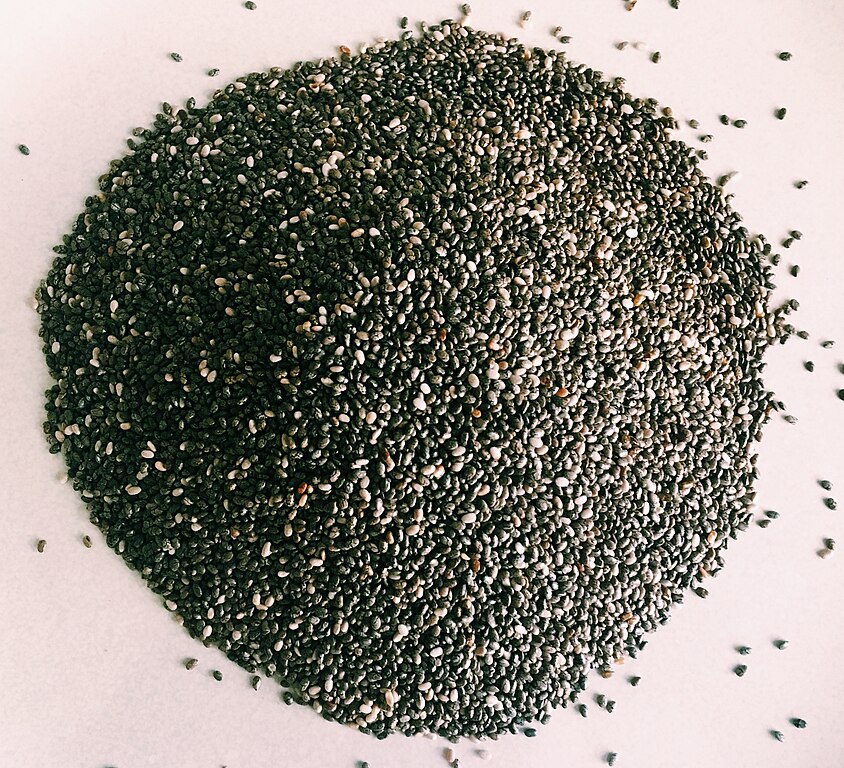

Chia seed is a reasonable source of supplementary protein, and is high in leucine and methionine, complementing the profile of pickle.
For example, 10 pickles (1350g) and 0.4 ounce of chia seeds (13g) make a complete amino acids profile. The entire range to create a complete protein are ratios of 1:0.01 to 1:0.9 for pickle to chia seed by weight.
Full nutritional profile for chia seeds
USDA Source: Seeds, chia seeds, dried
| Amino Acid | % of RDV [2] | Amount [10] |
Complete / Adequate |
|
| Protein |
|
17.7% | 8.8g | |
| Histidine |
|
29.9% | 0.19g | |
| Isoleucine |
|
41.6% | 0.36g | |
| Leucine |
|
27.7% | 0.52g | |
| Lysine |
|
27.7% | 0.47g | |
| Methionine |
|
16.5% | 0.14g | |
| Phenylalanine |
|
24% | 0.36g | |
| Threonine |
|
35.4% | 0.32g | |
| Tryptophan |
|
47.2% | 0.12g | |
| Valine |
|
36.1% | 0.39g |
Vegan 7. Nori and Pickles
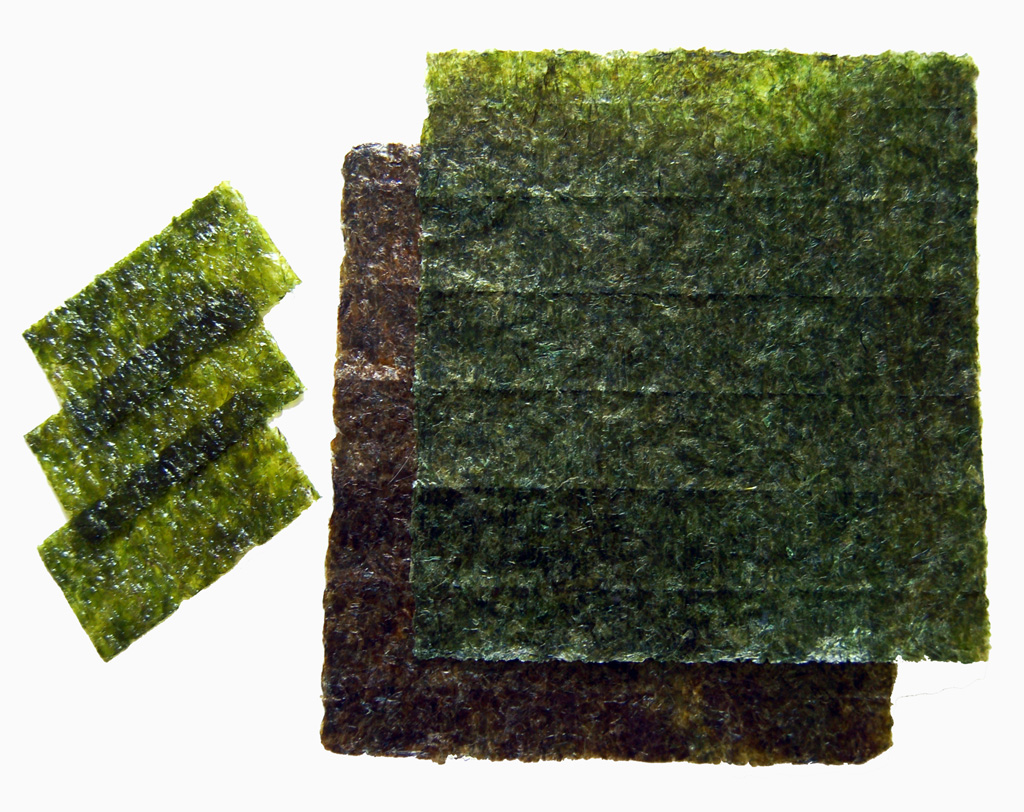

A reasonable source of supplementary protein, nori is high in leucine and methionine, which is complementary to pickle.
A ratio of 5 pickles (675g) and 15 sheets of nori (39g) creates a complete protein profile. The entire range to create a complete protein are ratios of 1:0.06 to 1:0.05 for pickle to nori by weight.
Full nutritional profile for nori
USDA Source: Seaweed, laver, raw
| Amino Acid | % of RDV [2] | Amount [11] |
Complete / Adequate |
|
| Protein |
|
11.3% | 5.6g | |
| Histidine |
|
18.3% | 0.12g | |
| Isoleucine |
|
26.7% | 0.23g | |
| Leucine |
|
19.7% | 0.37g | |
| Lysine |
|
15.3% | 0.26g | |
| Methionine |
|
10.5% | 0.09g | |
| Phenylalanine |
|
14.9% | 0.22g | |
| Threonine |
|
22.8% | 0.21g | |
| Tryptophan |
|
19.4% | 0.05g | |
| Valine |
|
27.1% | 0.29g |
Vegan 8. Sesame Seeds and Pickles


Sesame seed is a reasonable source of supplementary protein, and is high in leucine and methionine, complementing the profile of pickle.
For example, 10 pickles (1350g) and 1.7 tablespoons of sesame seeds (16g) make a complete amino acids profile. The entire range to create a complete protein are ratios of 1:0.01 to 1:0 for pickle to sesame seed by weight.
Full nutritional profile for sesame seeds
USDA Source: Seeds, sesame seeds, whole, roasted and toasted
| Amino Acid | % of RDV [2] | Amount [12] |
Complete / Adequate |
|
| Protein |
|
18.9% | 9.5g | |
| Histidine |
|
31.9% | 0.2g | |
| Isoleucine |
|
43.4% | 0.37g | |
| Leucine |
|
29.6% | 0.56g | |
| Lysine |
|
25.6% | 0.44g | |
| Methionine |
|
18.3% | 0.16g | |
| Phenylalanine |
|
25% | 0.37g | |
| Threonine |
|
38% | 0.34g | |
| Tryptophan |
|
48.8% | 0.13g | |
| Valine |
|
39% | 0.42g |
Vegan 9. Pumpkin Seeds and Pickles


A reasonable source of supplementary protein, pumpkin seed is high in leucine and methionine, which is complementary to pickle.
A ratio of 5 pickles (675g) and 0.3 cup of pumpkin seeds (17g) creates a complete protein profile. The entire range to create a complete protein are ratios of 1:0.03 to 1:5 for pickle to pumpkin seed by weight.
Full nutritional profile for pumpkin seeds
USDA Source: Seeds, pumpkin and squash seeds, whole, roasted, without salt
| Amino Acid | % of RDV [2] | Amount [13] |
Complete / Adequate |
|
| Protein |
|
13% | 6.5g | |
| Histidine |
|
23.5% | 0.15g | |
| Isoleucine |
|
33.8% | 0.29g | |
| Leucine |
|
23.4% | 0.44g | |
| Lysine |
|
24% | 0.41g | |
| Methionine |
|
12.2% | 0.1g | |
| Phenylalanine |
|
18.2% | 0.27g | |
| Threonine |
|
25.6% | 0.23g | |
| Tryptophan |
|
34.3% | 0.09g | |
| Valine |
|
35.9% | 0.39g |
Vegan 10. Spirulina and Pickles


Spirulina is a great source of protein, and is high in leucine and methionine, complementing the profile of pickle.
For example, 5 pickles (675g) and 1.3 tablespoons of spirulina (9g) make a complete amino acids profile. The entire range to create a complete protein are ratios of 1:0.01 to 1:2.6 for pickle to spirulina by weight.
Full nutritional profile for spirulina
USDA Source: Seaweed, spirulina, dried
| Amino Acid | % of RDV [2] | Amount [14] |
Complete / Adequate |
|
| Protein |
|
17% | 8.5g | |
| Histidine |
|
25% | 0.16g | |
| Isoleucine |
|
48.1% | 0.41g | |
| Leucine |
|
32.6% | 0.62g | |
| Lysine |
|
26% | 0.44g | |
| Methionine |
|
15.8% | 0.14g | |
| Phenylalanine |
|
24.3% | 0.36g | |
| Threonine |
|
42.1% | 0.38g | |
| Tryptophan |
|
44.8% | 0.12g | |
| Valine |
|
41.4% | 0.45g |
Vegan 11. Poppy Seeds and Pickles


A reasonable source of supplementary protein, poppy seed is high in leucine and methionine, which is complementary to pickle.
A ratio of 10 pickles (1350g) and 6.8 teaspoons of poppy seeds (19g) creates a complete protein profile. The entire range to create a complete protein are ratios of 1:0.01 to 1:1.4 for pickle to poppy seed by weight.
Full nutritional profile for poppy seeds
USDA Source: Spices, poppy seed
| Amino Acid | % of RDV [2] | Amount [15] |
Complete / Adequate |
|
| Protein |
|
20.4% | 10.2g | |
| Histidine |
|
33.6% | 0.21g | |
| Isoleucine |
|
48% | 0.41g | |
| Leucine |
|
31.9% | 0.6g | |
| Lysine |
|
31.2% | 0.53g | |
| Methionine |
|
19% | 0.16g | |
| Phenylalanine |
|
25.1% | 0.37g | |
| Threonine |
|
40.1% | 0.36g | |
| Tryptophan |
|
39.4% | 0.1g | |
| Valine |
|
44.4% | 0.48g |
Vegan 12. Cashews and Pickles
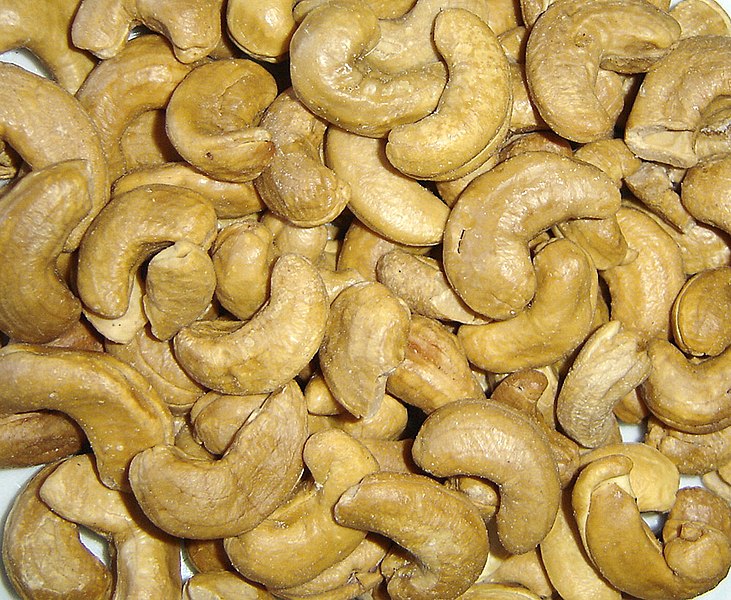

Cashew is a reasonable source of supplementary protein, and is high in leucine and methionine, complementing the profile of pickle.
For example, 5 pickles (675g) and 1 ounce of cashews (29g) make a complete amino acids profile. The entire range to create a complete protein are ratios of 1:0.04 to 1:9 for pickle to cashew by weight.
Full nutritional profile for cashews
USDA Source: Nuts, cashew nuts, raw
| Amino Acid | % of RDV [2] | Amount [16] |
Complete / Adequate |
|
| Protein |
|
17.2% | 8.6g | |
| Histidine |
|
30.5% | 0.19g | |
| Isoleucine |
|
41.3% | 0.36g | |
| Leucine |
|
31.7% | 0.6g | |
| Lysine |
|
25.9% | 0.44g | |
| Methionine |
|
16.1% | 0.14g | |
| Phenylalanine |
|
26.1% | 0.39g | |
| Threonine |
|
34.8% | 0.31g | |
| Tryptophan |
|
44.8% | 0.12g | |
| Valine |
|
41.6% | 0.45g |
Vegetarian 13. Sour Cream and Pickles


A reasonable source of supplementary protein, sour cream is high in leucine and methionine, which is complementary to pickle.
A ratio of 10 pickles (1350g) and 0.5 cup of sour cream (105g) creates a complete protein profile. The entire range to create a complete protein are ratios of 1:0.08 to 1:8 for pickle to sour cream by weight.
Full nutritional profile for sour cream
USDA Source: Cream, sour, cultured
| Amino Acid | % of RDV [2] | Amount [17] |
Complete / Adequate |
|
| Protein |
|
18.6% | 9.3g | |
| Histidine |
|
34.6% | 0.22g | |
| Isoleucine |
|
49.7% | 0.43g | |
| Leucine |
|
36.4% | 0.69g | |
| Lysine |
|
37.4% | 0.64g | |
| Methionine |
|
17.4% | 0.15g | |
| Phenylalanine |
|
26.4% | 0.39g | |
| Threonine |
|
42% | 0.38g | |
| Tryptophan |
|
42.9% | 0.11g | |
| Valine |
|
43.9% | 0.47g |
Vegetarian 14. Caramel and Pickles


Caramel is low in protein, and is high in leucine and methionine, complementing the profile of pickle.
For example, 5 pickles (675g) and 0.4 cup of caramel (116g) make a complete amino acids profile. The entire range to create a complete protein are ratios of 1:0.17 to 1:0 for pickle to caramel by weight.
Full nutritional profile for caramel
USDA Source: Toppings, butterscotch or caramel
| Amino Acid | % of RDV [2] | Amount [18] |
Complete / Adequate |
|
| Protein |
|
9.6% | 4.8g | |
| Histidine |
|
17% | 0.11g | |
| Isoleucine |
|
26.9% | 0.23g | |
| Leucine |
|
18.1% | 0.34g | |
| Lysine |
|
18.2% | 0.31g | |
| Methionine |
|
8.9% | 0.08g | |
| Phenylalanine |
|
13.2% | 0.2g | |
| Threonine |
|
21.2% | 0.19g | |
| Tryptophan |
|
13% | 0.03g | |
| Valine |
|
23% | 0.25g |
Vegetarian 15. Mayonnaise and Pickles
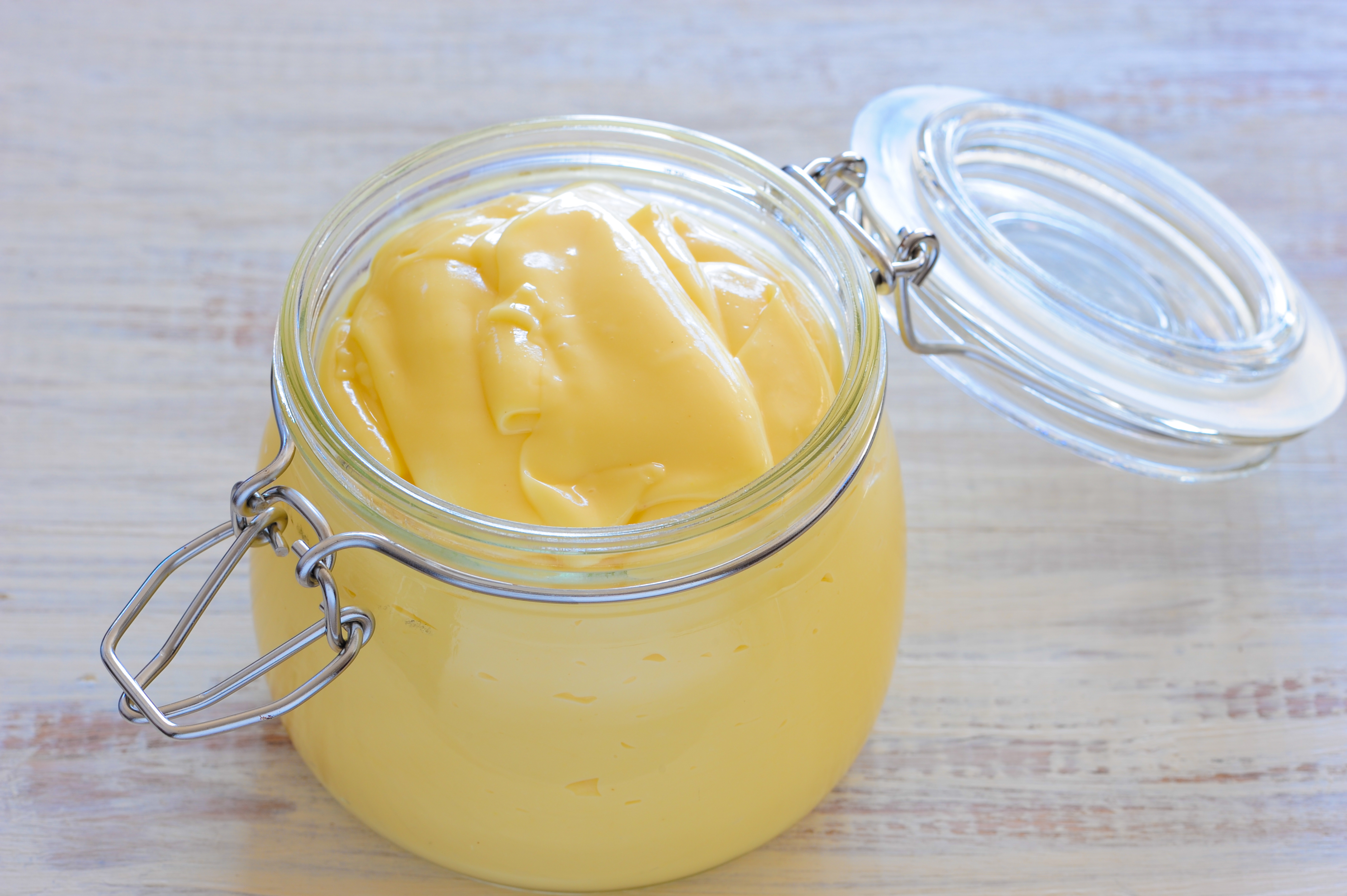

Low in protein, mayonnaise is high in leucine and methionine, which is complementary to pickle.
A ratio of 10 pickles (1350g) and 0.9 cup of mayonnaise (208g) creates a complete protein profile. The entire range to create a complete protein are ratios of 1:0.15 to 1:15 for pickle to mayonnaise by weight.
Full nutritional profile for mayonnaise
USDA Source: Salad dressing, mayonnaise, regular
| Amino Acid | % of RDV [2] | Amount [19] |
Complete / Adequate |
|
| Protein |
|
17.5% | 8.7g | |
| Histidine |
|
27.9% | 0.18g | |
| Isoleucine |
|
45.5% | 0.39g | |
| Leucine |
|
29% | 0.55g | |
| Lysine |
|
29.3% | 0.5g | |
| Methionine |
|
16.3% | 0.14g | |
| Phenylalanine |
|
23.4% | 0.35g | |
| Threonine |
|
38.2% | 0.34g | |
| Tryptophan |
|
39.5% | 0.1g | |
| Valine |
|
39.2% | 0.42g |
Vegetarian 16. Yogurt and Pickles
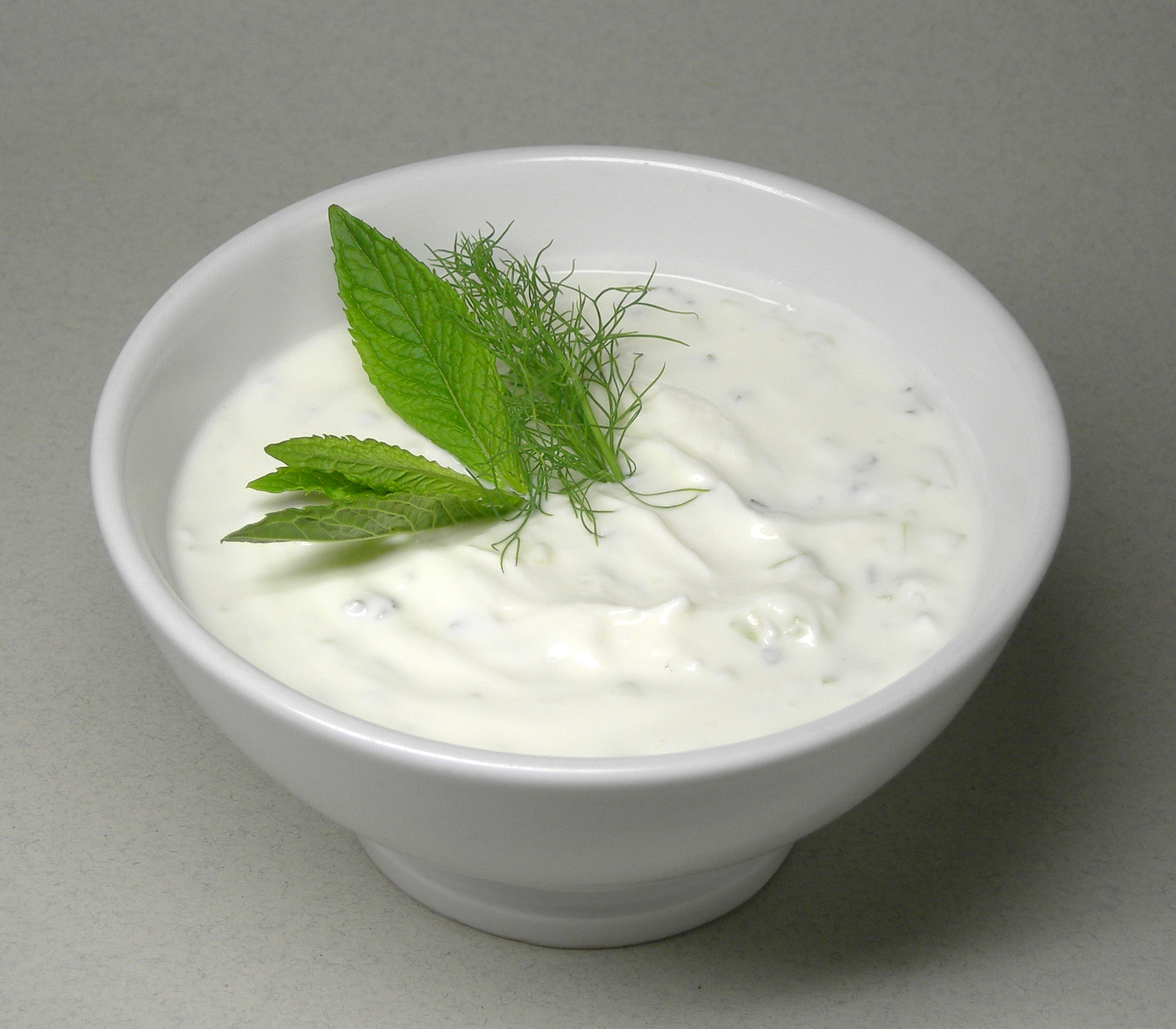

Yogurt is a reasonable source of supplementary protein, and is high in leucine and methionine, complementing the profile of pickle.
For example, 10 pickles (1350g) and 0.4 cup of yogurt (88g) make a complete amino acids profile. The entire range to create a complete protein are ratios of 1:0.07 to 1:0.01 for pickle to yogurt by weight.
Full nutritional profile for yogurt
USDA Source: Yogurt, plain, whole milk
| Amino Acid | % of RDV [2] | Amount [20] |
Complete / Adequate |
|
| Protein |
|
19.6% | 9.8g | |
| Histidine |
|
31.3% | 0.2g | |
| Isoleucine |
|
49.2% | 0.42g | |
| Leucine |
|
34.9% | 0.66g | |
| Lysine |
|
36.5% | 0.62g | |
| Methionine |
|
18.3% | 0.16g | |
| Phenylalanine |
|
26.6% | 0.4g | |
| Threonine |
|
39.4% | 0.35g | |
| Tryptophan |
|
32.8% | 0.09g | |
| Valine |
|
48.4% | 0.52g |
